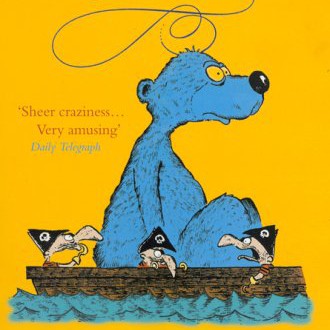I was reading a book the other night in my room, and as is my habit, enqueued a couple of albums on Winamp. The volume was moderate, the book was funny enough to get me laughing loudly at times (note to self: more Tom Sharpe. ), and there was a ready supply of fruit juice and Haldiram™ Bhujiya near the couch to get me going for quite sometime.
Except I kept getting a quivery feeling of dread every now and then.
It was the music. The band in question was Coil, a group I had heard being mentioned reverentially in lots of places. Curiousity made me seek out a couple of their albums. Creepy, to say the least. Layers and layers of atmospheric voices and sounds, distorted, breathy, disjointed at times – all of which makes for tracks that mess with your head if you aren’t paying too much attention. I just had to keep Wilt aside, and listen to Coil with reverential attention for the rest of the album. I like it when a band does that.
Did some reading up on Coil’s music and there is this impressive list of techniques used by them: (All information from the Wikipedia article on Coil)
- electronic voice phenomena (EVP)
- ritual hallucinogens
- lucid dreaming
- sidereal sound
- granular synthesis
- tidal shifts
- John Dee-like methods of scrying
- mistakes made by their electronic equipment
- synchronizing their studio to the SETI project
- Chaos Theory, et cetera.
As well as such exotic instruments as:
- archaic/obsolete modular synthesizers
- experimental photoelectronic synthesizers
- A Theremin
- A Moog
- morbid electronic Shakuhachi, et cetera.
Listening to an album called “Hanzo Steel”, a collection of remixes of the songs from Kill Bill – as expected, ranges from outrageously cheesy to catchy. “My Baby Shot Me Down” is largely unchanged for the first bit, and then there is a beat that could have been much better with a bit of thinking. What’s nice is the snippets of dialogue from various martial arts movies – I could idenfity Sonny Chiba from “The Bodyguard”. “Six million ways to die, choose one.”, – sounds freaky. “Battles Without Honour or Humanity” is completely screwed with vocals, while the theme from Twisted Nerve, juxtaposed with “Don’t Let Me Be Misunderstood” ( the song that plays when the bride fights with O-Ren Ishii ) sounds extremely cool. The Ironside theme is masticated beyond belief, but manages to stay in “catchy” territory. The best bits are the dialogue snippets that are scattered throughout the album. Nothing I would spend money on, but good to listen to on a lazy afternoon.
